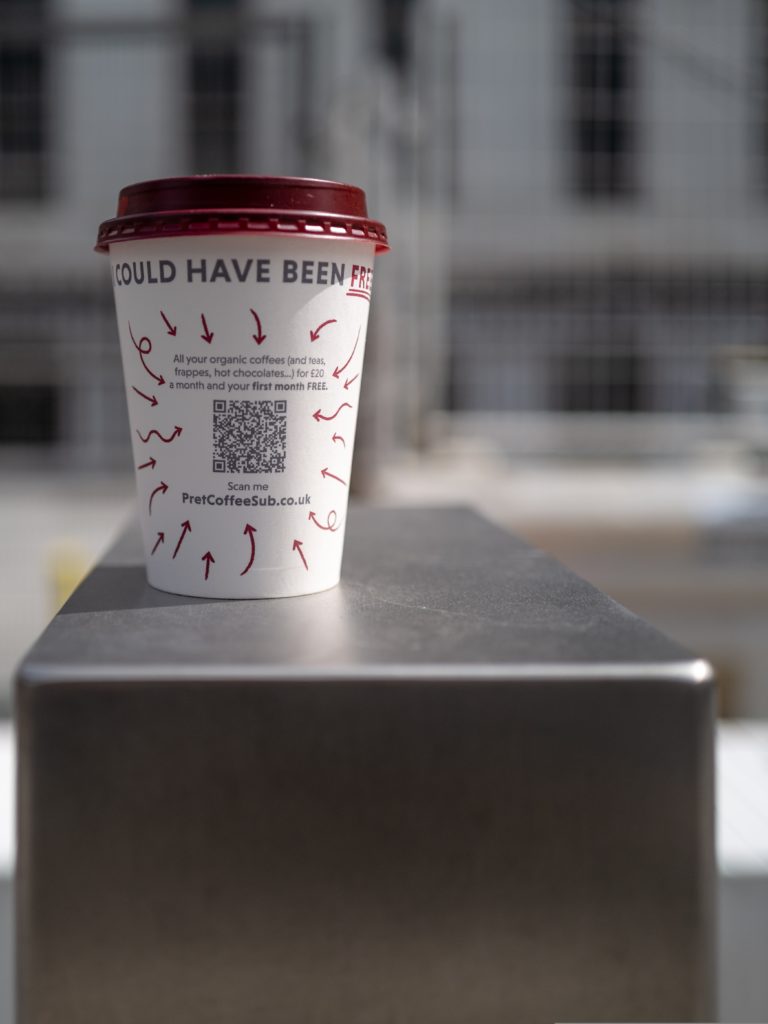Why it pays to focus on the inside
We’ve known for a while that the notion that brands are ‘just about what happens on the outside’ is a misconception. In fact, in this era of total branding, little distinction should be made between employees and customers.
It is a common myth across the business community that brands have a lot to do with what happens on the outside of a business and not very much to do with what goes on inside. This is profoundly wrong. Brands are everything to do with what happens on the inside.
Much more than appearances
Many people wrongly assume that a brand is just about the logo, the packaging or the advertising, and as a consequence are inclined to see the brand solely through the lens of how the brand looks. For these people, brands are the business equivalent of clothing or apparel. If you want your business to be well received (goes the theory) then the best thing you can do is change the way the business looks and smarten up your act. To think this way is to entirely misunderstand what is meant by a ‘brand’ and, worse, it is closing down a potentially powerful source of competitive advantage.
Why it pays to focus on the inside
Great brands tend to spend nearly as much time focusing on their employees as they do on their customers and there is a really good reason for this. Studies have shown time and again that there is a powerful link between motivated and engaged employees and strong commercial outcomes.
The most celebrated of the models that demonstrate this link was developed at Harvard Business School, called ‘The Service-Profit Chain’. This model effectively establishes relationships between profitability, customer loyalty and productivity. The links in the chain (which they regard as akin to propositions) work like this:
– Profit and growth are stimulated primarily by customer loyalty
– Loyalty is the direct result of customer satisfaction
– Satisfaction is largely influenced by the value of services provided to customers
– Value is then created by satisfied, loyal and productive employees
Employee satisfaction in turn, results primarily from high quality support services and policies that enable employees to deliver better results to customers. What the academics at Harvard were able to quantify is something that makes perfect sense. How your employees feel about where they work has a big influence on how they act, and how they act has a big influence on how customers feel. If you really want to shift your Net Promoter Scores (NPS) then start taking your employees seriously.
Hearts and minds
The best way to build a brand that customers will love and admire is to start by winning the hearts and minds of your employees. The brands that are celebrated for their distinctiveness and high levels of customer service are generally businesses that see their employees as critical to delivering the brand.
Take a look at some of the most successful global brands. It is no coincidence that brands like Apple, Google, Coca-Cola, Facebook, IBM, GE, Disney, Nike and Ikea (to name just a few) are businesses where the brand matters as much on the inside as it does on the outside. Brand and culture are inextricably linked.
The very best brands don’t tend to make a distinction between ‘brand’ and ‘culture’; in businesses like Nike and Ikea or Patagonia they are tantamount to the same thing. This is an important point because, in many organizations, different functions tend to operate in their own silos. So brand becomes the responsibility of the marketing department, the human resources team have responsibility for culture and the customer service team lead the attempt to improve the NPS.
In brand-led organizations the situation is very different. The business has a clear sense of what it is trying to achieve and as a result the brand is owned by the whole business. Rather than trying to compete with each other, different functions collaborate to find the ways in which they can manifest the brand both inside and outside the business.

Being brand-led
Brands are about the way you do business. In a brand-led business this approach starts at the top. Brands like Apple and Coca-Cola view their brand as the face of their business strategy. There is no arbitrary separation between the ‘hard stuff’ and the ‘soft stuff’ – they are seen as inextricably linked. In this type of organization a presentation to investors will typically start off by outlining the brand or organizational purpose, then move to demonstrate how the strategy will help the business achieve that purpose and then demonstrate how the brand will be used to enact that strategy with employees and customers.
As well as a clear and unequivocal statement of their brand intent, these businesses tend to operate in a way that is both tight and loose. They will be very tight on a few brand essentials, ethos and values etc, but looser when it comes to how the brand is executed. This often contrasts with the ‘loose and tight’ approach, usually in evidence at less enlightened organizations – where a business is actually quite loose about what it stands for but incredibly tight and controlling when it comes to every aspect of execution. You know the type: no one inside the organization is really sure what they are trying to achieve but they do know that the greatest sin of all is using the wrong version of the logo!
Don’t half-ass brand-led strategy
We have seen the leadership of businesses that profess to be brand-led struggle to even recall their own brand values. In one particular instance a senior leader even admitted that the reason he couldn’t recall the values was that there were too many of them to remember. If the senior leadership of a multi-national business can’t remember their organizational values, either because they are a bit meaningless or there are too many to remember, then how seriously is the brand being taken further down the business?
Brands help protect your business and attract talent. In an era where reputations are hard-fought and easily lost, it is vital that employees are clear about the type of behaviour that is not acceptable. Employees need to know what the brand expects of them and how they can escalate issues internally (without fear of reprisal) if they see something illegal, immoral or inappropriate. A clear and understandable set of brand values can help an organization anchor the behaviours it is seeking.
People make a brand
A brand-led business will also typically invest heavily in high quality recruitment processes and they will spend time inducting their new employees into the business. Emphasis will be placed not just on what the business does, but on why it does it and how it does it.
The best brands are not seeking uniformity from their staff: they are seeking to instil the notion of freedom within a framework. It is no coincidence that a candidate seeking employment at Goldman Sachs is likely to be interviewed six or seven times before being asked to join. Or that Pret-A-Manger give existing store staff the final say on who joins their team.

Brand-led businesses know that getting and training the right kind of talent is key to high performance. Such businesses will also seek to ensure that the employee experience is first-class and that employees are continually trained and supported such that they can be the very best versions of themselves. People often mistakenly believe that employees’ goodwill can be bought simply by giving out good stuff. No amount of holiday or free coffee is going to make up for being poorly managed or badly mistreated.
How to win together…
● Establish a clear and motivating purpose or objective for your brand, clearly articulating the ‘why’ as well as the ‘what’ and the ‘how’. A brand purpose is not the same as corporate social responsibility (CSR). It is the authentic articulation of what it is that matters most to both your customers and your employees. Premier Inn’s purpose is simply to: ‘Make our customers feel brilliant.’ This is enacted through a proposition, which aims to give customers: ‘A great night’s sleep’. No one inside Premier Inn is unclear about what they are trying to achieve
● Develop a brand-led employee experience that taken as a whole demonstrates the value placed on employees. This includes developing a few internal hallmarks that reflect your brand intent, for example ways of feeding back, opportunities to develop new skills, rituals to welcome new joiners. Ultimately, though, the employee experience is defined by the quality of the management. This isn’t so much about style (as this can vary enormously) but more about intent, decency and support. Southwest Airlines is globally famous for the quality of its customer service. But at Southwest it is also acknowledged that the customer isn’t always right. If a customer makes a dishonest complaint or behaves reprehensibly towards a hardworking employee then Southwest might ‘fire’ the customer and show support to its employee. This helps to engender employee loyalty.
● Give sufficient freedom and support to employees so that they are consistently able to act in the best interests of customers. Virgin is a brand often celebrated for the quality of its customer service. Virgin does well not because it necessarily has better training than anyone else but because employees know that Virgin is on the side of the customer and they are prepared and encouraged to go further because they know that is what the brand would expect of them. That’s why Virgin was able to turn a customer stuck in a toilet on one of their trains without any toilet paper, into a social media win.

Employees can be powerful ambassadors
Outstanding customer service comes from an employee instinctively knowing how to respond to a situation and then having the courage to act because they know the brand has their back. Enlightened brands rightly see their staff as both ambassadors for their organization and an important connection point with customers. Even if you don’t subscribe to the idea that there is a direct link between how your employees feel and how your business is performing then you must surely see their potential as ambassadors?
On the basis that we know how important word of mouth is, we are constantly amazed that many large organizations spend such little time helping to turn their employees into advocates. Nissan’s manufacturing plant does a great job here. Not only does it have a clear brand purpose, a motivated workforce and an ongoing programme of customer and community engagement, but it also runs schemes to allow employees (and their families) to purchase cars at heavily discounted rates. Employees who are both making and owning the vehicles are the very best kind of ambassador. They are demonstrating their confidence in the brand by spending their own money.
Treat the cause of your malaise and not just the symptoms
It’s often easy to spot a brand that requires help on the inside. A bit like when you are feeling unwell: the symptoms can often lead you to the cause. How often have you heard things like: ‘I am not really sure what the company is trying to achieve’ or ‘I know we need to change, but I am not quite sure how we intend to do it’. Often business leaders will talk about ‘employees not really getting it’ or express their frustration at the ‘lack of change within the business’. All of these statements are really exposing a failure to engage staff and many of these issues can be addressed by harnessing the power of brand.
When seeking change, start on the inside
When it comes to changing your strategy or repositioning your brand, you would do well to first engage with your employees. What hope do you have of delivering a new strategy to customers if employees are unclear about why the organization is changing direction as well as what is now required of them? Brands should apply the same tools and techniques to their internal audiences as they do to their customers.
Hearts and minds are rarely won over with a fifteen-minute PowerPoint presentation. A lot of nonsense is spoken about engagement programmes, and in many businesses it is as though a collective amnesia descends the minute the business starts having to talk to engage internally. Employees should be treated just like a more intimate group of customers. It is naive to think that material produced internally (such as videos or presentations) won’t finish up being shared on social media. Assume that it will be and then start using that to your advantage. Accept that, just like your potential customer base, you are unlikely to convert everyone to your cause.
Don’t waste time trying to play chess with people who ultimately don’t want to play chess. Instead focus on the employees who are open to change and target your resources where you know it matters. Communicating any type of change requires employees to first hear about the change, then to understand the change, then to see the change happening and ultimately to believe in the change.
Treat your engagement like an ongoing campaign
Use the full suite of appropriate channels, encourage dialogue, and don’t hide from the difficult questions. Accept that the process is ongoing. All of this matters because delivering for customers is getting more complex.
The most progressive and fast-moving brands are no longer working in silos. The internal structures within organizations are changing to reflect the need to have a single view of the customer and deliver seamless customer service across any type of device or access point anywhere in the world. Agile teams come together to solve specific issues and then dissolve again once the issue is fixed. Teams are networked and diffuse.
To conclude…
The best way of meeting the brand challenge is to make your brand work as hard for you internally as it does externally. Create a strong purpose and use it to drive meaning and coherence across your organization. Treat your employees as more intimate customers. Recognize the potential of your employees to act as ambassadors. Engage effectively and welcome challenge. Get your employees to share customer problems and harness their expertise to help you solve them.
We live in the age of total branding. It is not possible to divorce or hide what goes on in an organization from what is happening outside. Brands are essentially porous. We know that what happens inside an organization has a direct influence on how a business performs. Motivating and engaging your employees is the best way of improving your customer service and increasing your customer satisfaction.
Great brands spend a lot of time engaging and nurturing their employees because they know this is the way to achieve outstanding results and celebrated service – they make sure that their staff know what behaviour is expected of them and how they can individually play their part in the development of the organization.
In this era of total branding little distinction should be made between employees and customers. Both have the potential to be passionate advocates for your brand and both are critical to your success. To get it right on the outside you must first get it right on the inside.
Further reading – The Service-Profit Chain.
This article was based on chapter 19 of The Myths of Branding by Simon Bailey and Andy Milligan.
Image credits to: Blake Wisz, David Siglin, the blowup, Francois Olwage





